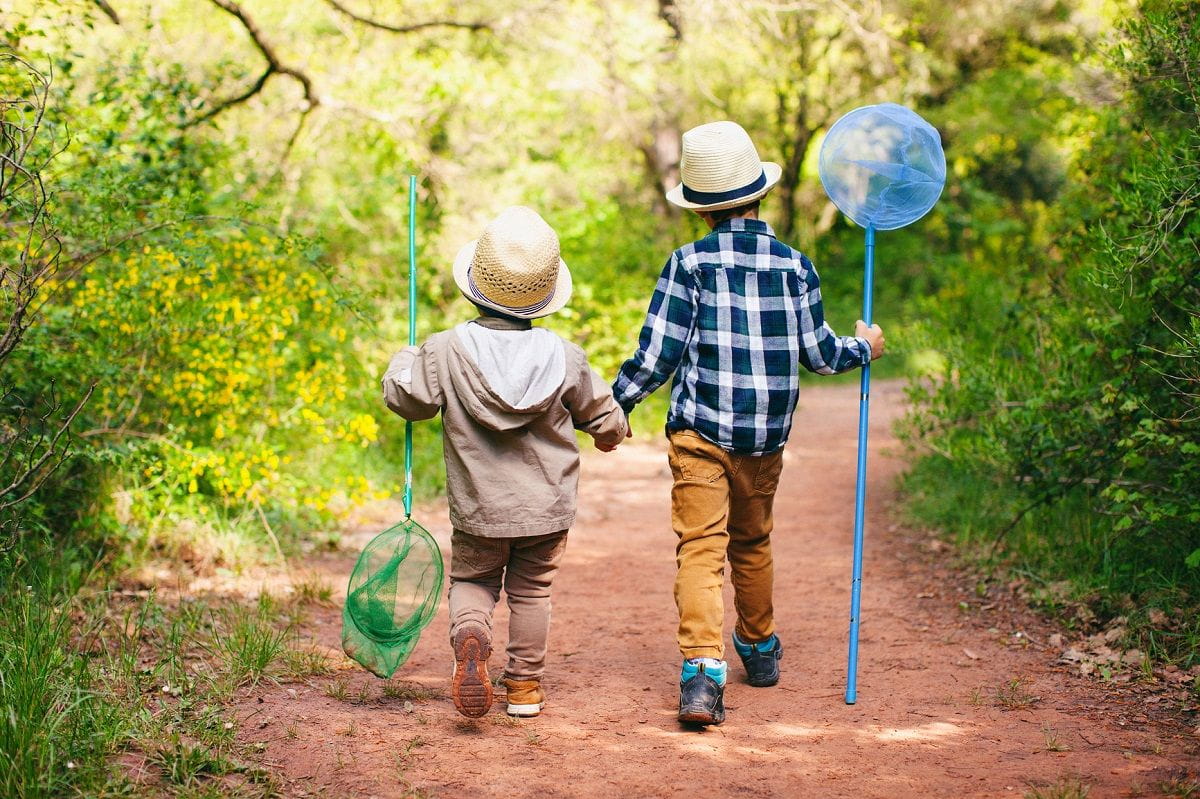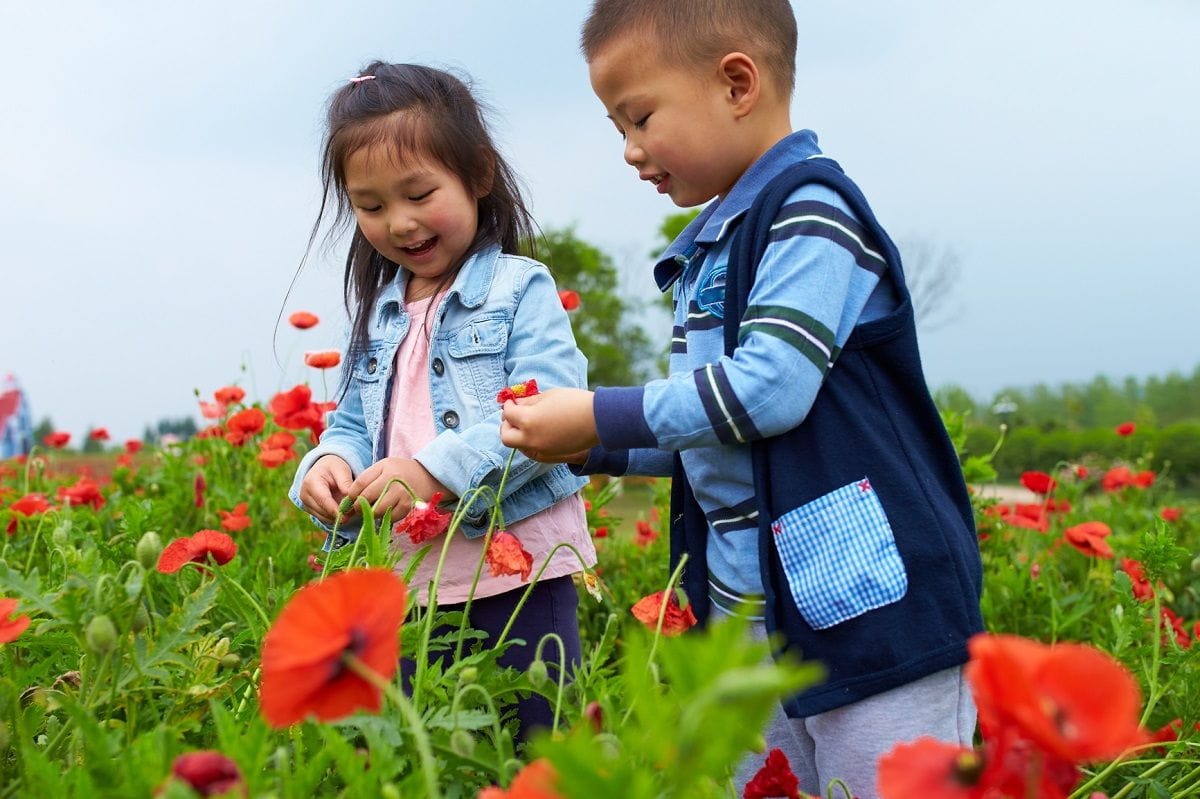Embrace the New Season with These 4 Spring Activities for Kids

Warmer weather, blossoming flowers, fresh air—spring is here, bringing with it a smorgasbord of learning opportunities for youngsters. Exploring the natural world by watching grass sprout from the earth, flower buds unfurl in colorful splendor, or a butterfly take flight inspires wonder and curiosity in little ones, necessary traits in lifelong learners.
So grab those galoshes, butterfly nets, and magnifying glasses and hit the outdoors to help your kids build their awareness of the world around them with these four spring activities for toddlers and preschoolers alike.
1. Search for Signs of Spring Together
Materials needed: Pen and paper (optional)
Looking for sweet and simple spring outdoor activities? Go for a walk! But as you do, identify signs of spring together, focusing on the colors, sounds, smells, sights, and textures around you.
With babies or toddlers
If your child is an infant or toddler, find new items for them to touch and explore (like a leaf or twig), and describe what they are touching: “What do you have? You have some grass. It’s green. Do you like the way the grass feels in your hands?” Just getting familiar with new textures, colors, and items helps infants build valuable connections in their brains.
With preschool age and up
If your child is three or older, let them take charge—being able to freely and safely explore their surroundings is a great way to boost independence and self-esteem. As you start out on your walk, ask what things they want to look for and make a list together (whether in your minds or on paper). Rain puddles, snow melting, budding trees, flowers blooming, birds nesting—there’s no wrong way to go!
As you walk, mix in some guessing games to help your child express what they’re observing (and work on phonetics skills a little): “I see something that starts with the /b/ sound. It flies and it likes flowers. What do you think it is? It’s a bee!”

2. Blossoms and Buds Scavenger Hunt
Materials needed: A non-breakable magnifying glass (optional)
Buds, blossoms, and blooms abound in the spring, and their unique shapes can intrigue young minds.
With preschool age and up
Head out with your little mover and shaker—do they know what it means when a plant blossoms? If you’re bringing along a magnifying glass, hand it over and explain that if they looks closely at a bush, tree, or plant, they may find tiny buds that are about to open into flowers.
Take a look at whatever flowers you find, from rose or rhododendron bushes to patches of wild violets or daffodils, and encourage them to use the magnifying glass to examine the buds and blooms up close. Remind them not to pick what they find, since buds need to continue growing, and ask open-ended questions as they explore, like “What colors do you see?” or “What does that bud look like up close?”
3. Spring Color Quest
Materials needed: A favorite book of colors
Bringing familiar activities outdoors lets your child experience things and see materials in new ways, so why not tuck a book of colors under your arm and take story time to the fields?
With babies or toddlers
If your child is an infant or toddler, collect a few natural objects in different colors as you walk. Once you’ve found your reading sweet spot, explore the book together and place each item on the page with the color that it matches.
With preschool age and up
If your child is three or older, let them have a chance to get some of that energy out! Ask them to look for something outside that matches a color in the book, and when they find it, tell them to stand next to it as quick as they can. Repeat until they’re just too tired to run anymore or it’s time to head back.

4. Explore the Wind
Materials needed: A lightweight scarf
Is it a rather breezy spring day? Rummage up a lightweight scarf and head to the hills!
With toddlers and up
We doubt it will take much coaxing before they’re off running, waving, dropping, or blowing on the scarf to experiment with how they can make the scarf move. Once they have had their fill of that, encourage them to try the opposite, too: If they stand still and hold the scarf out, does it move with the wind in the air?
When they’ve decided to take a breather, explain that there are windy days in spring, and that sometimes the wind is blowing even when they don’t feel it. Ask: “What are some ways we can know if the wind is blowing?” Point out a tree or bush and watch it for a while. Do the leaves move? Have them take a peek at the sky (away from the sun!) to see if the clouds are moving. If they are moving, what do they think it means?





